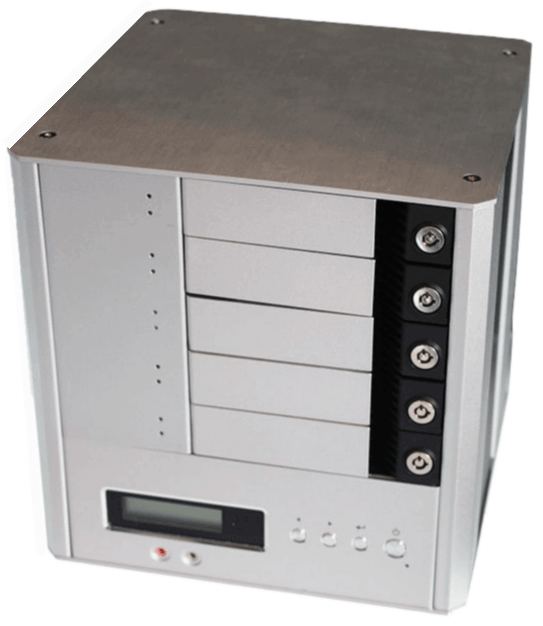Whatever the form of data it is, (music, movies or business applications) fetching data from a number of computers and storing at one place surely appears complicated, isn’t it?
That’s not all! Managing servers, maintaining security of data and many similar issues surface with such large scale storage of data. Many believe this problem to be a hard nut to crack, but it actually isn’t. The simplest solution to the aforementioned scenario is – Network Attached Storage (NAS).
Network Attached Storage (NAS) – Shared Storage
What actually is a NAS? A network attached storage (NAS) device can be considered to be a server dedicated for file sharing alone. Compared to a typical server, a NAS differs in activities like say, authentication, and email and so on.
Simply speaking, a NAS device stores and facilitates data storage across multiple computers. This data can be accessed from any computer within the network or over the internet.
A network attached storage device permits the addition of extra hard disk storage space to a computer network. Each of these storage devices bears a unique IP address just like any other devices on the network. A specific web-based utility program helps configure and manage all these NAS devices, using the RAID storage technology.
The added benefit these NAS devices provide users is the ability to connect many such devices as an array (called the NAS array). This entire storage is not restricted to any single computer but to each and every computer on the network.
Thanks to NAS devices, now backing up all the data on your computer’s hard drive is lot easier, plus, you can then access this data on the go, over the internet. Most of these NAS devices run on the standard Microsoft Windows operating systems.
The operating systems of these devices unlike OSes of desktops or laptops have a very limited set of task to perform. The ability to run these limited tasks more effectively marks the difference among NAS devices of various manufacturers (ASUSTOR, EMC Corporation, HP, Netgear etc.)
Network Attached Storage (NAS) – Pros and Cons
- The first major advantage with a NAS device is its ability to support file sharing between all the different machines and operating systems (Windows, Mac OS, Unix etc.).
- These devices are ‘plug-and-play’, which means there are no tough technical installations or proceeding to carry out. A simple installation and a little configuration based on your LAN will do.
- With a NAS device in hand, you can create a central media library in your home. Plus, access this library of photos, videos, songs, documents etc. from any corner of your home from multiple devices.
- Startup businesses, Small and Middle Businesses (SMB) don’t have to sweat out all the investment for a SAN (Storage Area Network). Instead they can go for a NAS device and add on disks into this device based on their usage.
- Finally, if there’s more data with you than what a computer can hold, you’d better prefer the NAS for its simplicity, versatility and effectiveness.
There certainly are a few limitations of NAS. Some of which include clogging of the LAN with heavy NAS activity, not suitable for data transfer applications, less storage security than SAN, lower processing power, its inability to transfer large blocks of data (something for which SAN is tailor-made for) and also the speed of data transfer isn’t as good as a LAN. But at the end of the day, if you are sure these disadvantages are bothering you, you could shift to a SAN else, NAS is the best solution for such medium scale data storage (up to some 1000 GB).

